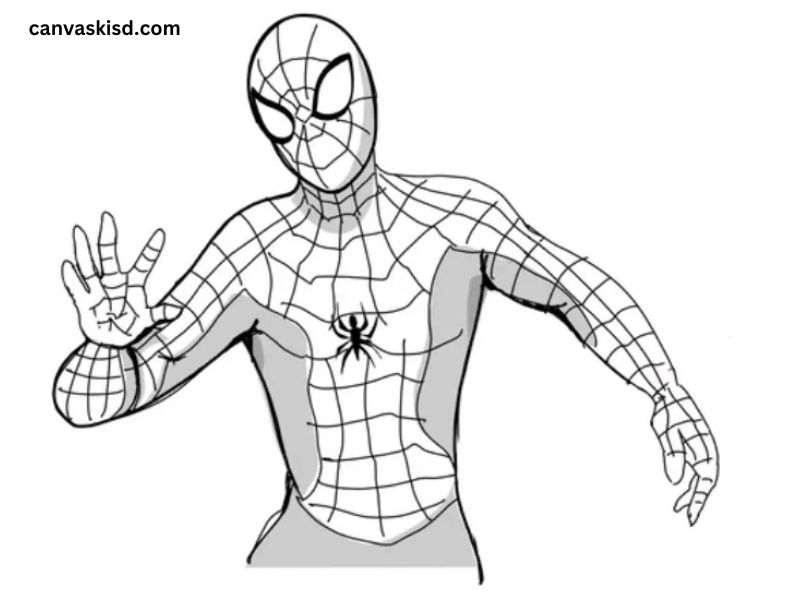Drawing Spider-Man can be an exhilarating experience for artists of all skill levels. This iconic superhero, created by Stan Lee and Steve Ditko, has become a symbol of heroism, resilience, and the quintessential struggle of balancing personal life with superhero duties. In this article, we’ll explore the techniques, tools, and tips to help you capture the essence of Spider-Man in your artwork.
Understanding Spider-Man’s Character
Before putting pencil to paper, it’s crucial to understand who Spider-Man is. He is not just a superhero; he’s Peter Parker, a young man dealing with everyday challenges, from school to relationships. This duality is what makes Spider-Man relatable and compelling. As you draw, consider incorporating elements that reflect both his superhero persona and his human side.
Essential Tools for Drawing
- Pencils: A variety of pencils (H for hard lines, B for shading) can help you create a range of textures. Start with a lighter pencil for initial sketches and switch to darker pencils for details.
- Erasers: A kneaded eraser is excellent for lifting graphite without damaging the paper, while a standard eraser can help with clean corrections.
- Inking Pens: For final touches, use fine liners or brush pens. They can add depth and texture to your drawings.
- Paper: Choose smooth, heavyweight paper for pencil sketches and inking. This allows for cleaner lines and better erasing.
- Digital Tools: If you prefer digital art, programs like Adobe Photoshop or Procreate offer powerful tools for drawing and coloring.
Step-by-Step Guide to Drawing Spider-Man
Step 1: Sketching the Basic Shapes
Start with simple shapes to form the structure of Spider-Man’s body. Use circles for the head and joints, and rectangles for the torso and limbs. Spider-Man’s pose is dynamic, so consider action-oriented stances, like swinging from a web or preparing to leap.
Step 2: Defining the Anatomy
Once you have the basic shapes, refine the outline to include more anatomical details. Spider-Man is lean yet muscular, reflecting his athleticism. Pay attention to the proportions: typically, the head is about one-eighth the height of the entire body. Use reference images to get the muscle definition right, especially in the arms and legs.
Step 3: Adding the Costume Details
Spider-Man’s costume is instantly recognizable. Begin adding the iconic features:
- Webbing: Draw the web pattern on his suit. Start with lines radiating from the center of the face and create a crisscross pattern over the body.
- Spider Emblem: Place the spider symbol prominently on the chest, ensuring it fits proportionately with the rest of the suit.
Step 4: Facial Features
The mask is a key element of Spider-Man’s design. Focus on the shape of the eyes and the positioning of the webbing. Spider-Man’s expression, even behind a mask, conveys emotion, so think about the angle and stance you want to portray.
Step 5: Finalizing the Lines
Once you are satisfied with your sketch, go over the lines with an inking pen. Take your time to create clean, confident lines. Vary the thickness of the lines to add depth; thicker lines can highlight certain features, while thinner lines can be used for details.
Step 6: Shading and Coloring
For traditional drawings, consider using colored pencils, markers, or watercolors. Spider-Man’s suit is primarily red and blue, so use these colors to fill in your drawing. Don’t forget to shade to create depth—use a darker shade of red for the areas that would be shadowed.
If you’re working digitally, use layers to separate the line art, colors, and shading. This makes it easier to adjust colors and effects without altering the original lines.
Tips for Capturing Spider-Man’s Dynamic Nature
- Pose Variation: Spider-Man is known for his acrobatic moves. Experiment with various poses—swinging, crouching, or even climbing. This adds dynamism to your artwork.
- Use Action Lines: To enhance the sense of movement, incorporate action lines around Spider-Man, suggesting speed and motion.
- Background Elements: Consider adding elements like buildings or cityscapes. These can provide context and enhance the storytelling aspect of your drawing.
- Study the Source Material: Look at comic books, animated series, and movies. Observing how different artists portray Spider-Man can give you insights into varying styles and techniques.
- Practice, Practice, Practice: Like any skill, drawing improves with practice. Regularly sketch Spider-Man in different poses and expressions to develop your technique.
Conclusion
Drawing Spider-Man is not just about replicating an image; it’s about capturing the spirit of the character. With the right tools, techniques, and a bit of creativity, you can create stunning artwork that pays homage to this beloved superhero. Remember to enjoy the process, and don’t be afraid to experiment and find your unique style. Whether you’re a beginner or a seasoned artist, the web-slinger is an endless source of inspiration. Happy drawing!



